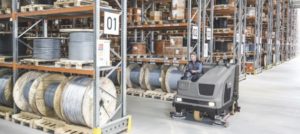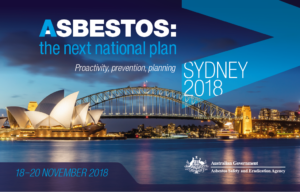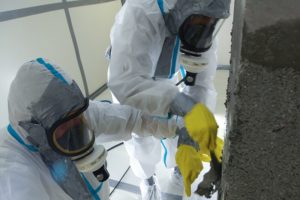In 2019, new regulations came into effect for the asbestos businesses in France. All laboratories had until April 21 of this year to enforce this regulation. For many years now at ITGA, we analyze our material samples with TEM, which allows us to perform a chemical analysis to determine the nature and composition of the fibers. In addition, for so-called “fibrous” materials (with visible fibers), a PLM analysis is carried out.

Unlike other countries in the world where regulations and standards are not as strict, in France we do not differentiate between serpentines and amphiboles, they are all considered to be carcinogenic, and therefore dangerous.
This new regulation requires us to rethink our methods and our information and sample processes, firstly with our customers but also within our laboratories accredited by our French Cofrac accreditation committee. For reliable and efficient test results for all, it is necessary to adopt rigorous methods and exchanges of information between operators and the laboratory. From now on, operators must describe the sample taken and indicate to the laboratory the layers of interest to be analyzed.
The decree provides for operators to indicate a certain amount of information concerning their samples (such as: file number, list of samples, type of material, etc.). The old requirements, still applicable: require that the samples be packaged individually in a double bag and identified by a unique reference, now it is specified that the double bagging must be airtight.
On receipt of samples, the decree provides that the laboratory carries out 2 verifications: an examination with the naked eye and an examination with a binocular magnifier. It is also required to provide results by separable layer (1), as a sample may contain several layers. As far as possible and to guarantee the limit detection (2), an analysis result per layer will be given to the client.
Otherwise, an analysis for a set of layers is carried out, but a mixture of layers limits the possibility of detecting asbestos, which is why it is essential for the client to communicate to us the layer of interest to be analyzed, the precise description of his sample and to provide us with a sufficient quantity for analysis.
At ITGA, we support our clients to make this transition as simple and efficient as possible. The internal department in charge of preparing our laboratories for this regulation informed and supported all the teams mainly concerning the changes related to the application used for the traceability of our samples.
(1): Element that can be distinguished from other elements by superposition or stratification.
(2): This is the smallest mass concentration of asbestos that can be detected with a probability of 95%.

![You are currently viewing [ITGA NEWS]: New French regulation – Decree of October 1, 2019](https://dev.itgagroup.com/wp-content/uploads/2021/05/5.png)


